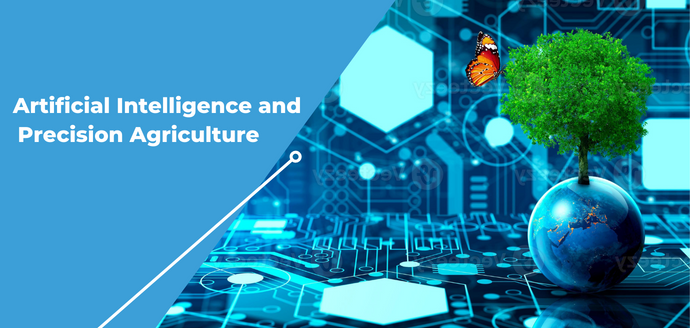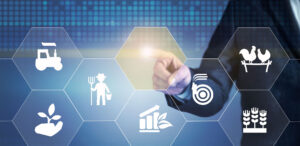
09 Nov Artificial Intelligence and Precision Agriculture
Population growth, progressive reduction of cultivated land and climate change require agricultural production to be increasingly efficient and effective.
There is an growing move towards precision agriculture, a farm management strategy that employs ICT to acquire useful data to enhance efficiency, yield and quality while optimizing the impact on the environment.
What is Precision Agriculture (PA)
PA refers to a series of strategies and tools to optimise and increase the quality and productivity of the soil through a series of targeted interventions based on Artificial Intelligence. It is called ‘precision’ as thanks to state-of-the-art tools the practice applies the right treatment, in the right place and at the right time.
Crops are treated with varying amounts of irrigation water, fertilisers, pesticides, etc. according to the actual needs of each piece of land, synchronizing with real time data from sensors and weather forecasts.

Precision Agriculture’s technologies
Today, farms dispose of a variety of technologies to improve the management of their plots of land. Among the most widely used there are:
- Control tools. They allow us to detect and understand what is happening in the field through measurements (satellite or drone maps, field surveys, soil analysis, weather stations, collection maps).
- Forecasting tools. They help us estimate what is happening in the field without direct measurement (weather forecasts, estimation of irrigation or fertiliser requirements, phenological and plant disease development models).
- Decision and prescription tools to support data driven decisions by comparing meaningful data and integrating them with each one another (prescription maps, DSS).
- Implementation systems. They enable decisions and prescriptions at field level (parallel guidance, automatic guidance, actuators, variable rate technology).
- Traceability systems. They trace the product life cycle from field to consumer according to the ‘from farm to fork’ strategy (blockchain, telemetry).
Precision Agriculture’s benefits
Algorithms and big data analysis are changing the management of seed species, field conditions and crops. But there are many other aspects that can be optimised and further developed.
- Species selection. Through deep learning algorithms, a probability model can be built to predict the specific genes that are most likely to contribute to a beneficial trait for a crop.
- Plant recognition. Machine learning can provide more accurate and faster results by analysing the morphology of the leaf vein, which contains most information about the properties of leaves.
- Soil. Machine learning algorithms study evaporation processes, soil moisture and temperature to understand the dynamics of ecosystems in agriculture.
- Water resources. The most developed machine learning-based applications to date enable more effective use of irrigation systems and prediction of daily dew point temperature to identify predicted weather phenomena and estimate evapotranspiration and evaporation.
- Production quality. Compared to human experts, machines can use seemingly insignificant data and interconnections to improve and raise the overall quality of production.
- Pest and disease detection. The most common practice in pest and disease control is to spray pesticides evenly over the cultivation area. To reduce costs and waste, precision farming makes use of Artificial Intelligence to target the application of chemicals in terms of time, place and affected plants.
- Weed detection. Computer vision and machine learning algorithms can improve weed detection and discrimination at low cost and without side effects. In the future, these technologies will drive robots that destroy weeds, minimising the need for herbicides.

In conclusion, it is essential to emphasise that practising Precision Agriculture is becoming increasingly urgent due to the increase in global food requirements as a result of the exponential increase in population that we have been witnessing in recent decades: it is expected that by 2050 the earth will have around nine billion people to feed.




